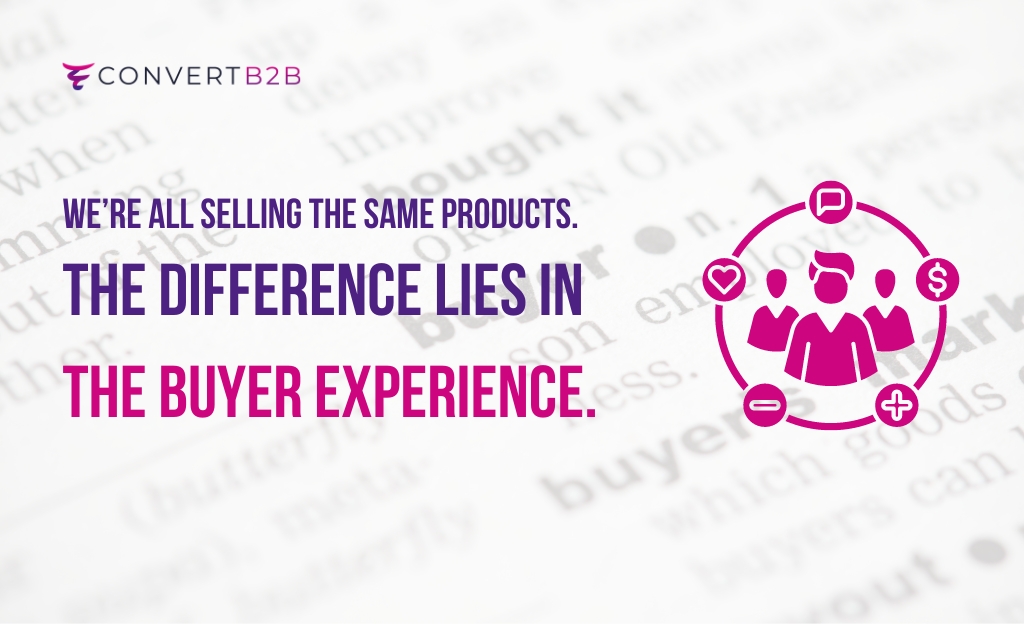Blog
Conquering Information Black Holes: B2B Sales Tactics for Key Accounts

If you are a SaaS SDR pursuing accounts, we feel for you.
On the face of it, the number of contact channels you have for outreach and the critical insights you gathered seem more than enough to crack a conversation and convert a prospect.
But there is another way to look at it. The convenience of seamless automation also made way for a major cause of friction that few are willing to discuss – making your job far more complicated. The automation systems that made your sales funnel more efficient have done the same for the target organizations or key accounts as you like to call them.
Understanding the Complexity of Enterprise-Level Sales
Enterprise-level businesses, today, work like synchronized behemoths, tightening internal processes and cross-departmental connections for better performance. That’s because today’s enterprise-level sales require navigating complex decision-making processes and understanding the influence of multiple stakeholders.
And this has led to the inclusion of stakeholders in the buying decision who do not directly deal with the product but certainly influence the process. It is most acutely felt by SDRs in the driving seat, trying to reach out to prospects with the hope of getting closer to converting an account.
>> On average, the number of B2B buying committee members ranges from seven to 20.
Today, say, the purchasing department cannot adopt a new tech stack without affecting the functioning of other departments. The same is true about others which only complicates your job as a B2B vendor.
So, what to do about it? as an outsider, it seems impossible to draw a clear picture of the decision-making process within an organization because each organization differs in its approach to high-ticket B2B buying decisions. But there are certain patterns that you can follow to keep your case tight and devise a full-proof sales execution plan that lends you the ammunition to stay on course.
Here we have identified some critical ‘Rethink’ approaches to SaaS enterprise-level accounts that both marketing and sales teams have to initiate for the smooth functioning of the funnel.
Mapping the Maze: A Look at Stakeholders
Take one account at a time. Chalk out the number of people who are likely to be involved. They are not a bunch of prospects but individual businesses with varied concerns and processes to deal with you.

If it’s a high-value sale, finance will have a role to play. If it’s automation software, seemingly indirect departments, i.e., information security (for safety concerns), will put their two cents on the process. It would be best if you drew a map of all the possible combinations of departments and individuals who are likely to be affected by the purchase of your solution.
You can broadly divide the stakeholders into two main categories: external and internal.
Internally, the mid-level managers of multiple departments whose lives will be affected should be considered. Digital managers, finance, and even HR if it’s a product that requires some training to save the internal culture from disruption.
The best way forward is to develop a strategy that answers the concerns of all the internal stakeholders and covers every aspect of their concerns.
First things first: visualize the landscape. Forget the days of one-on-one pitches. Modern B2B buying involves numerous stakeholders across departments, each with unique concerns and needs.
Things to Cover in Your Stakeholder Map
Start by creating a “stakeholder map” for each key account. Identify:
- Internal players:
- Actual users: Impacted by daily functionalities.
- Technical team: Concerned with integration and security.
- Executives: Focused on ROI and strategic alignment.
- Process managers: Ensure operational efficiency.
- Security and compliance teams: Address potential risks.
- External influencers:
- Government agencies: Industry regulations.
- Consultants: Expert opinions and insights.
- Thought leaders: Shaping industry trends.
By understanding this ecosystem, you can tailor your outreach and address individual concerns effectively. But how is it possible to deal with the various relevant stakeholders?
The answer to this question brings us to the most important part of the article which is likely to afford you a front seat in the decision-making process of a key account.
Content is King: Your Weapon of Choice
Gone are the days of brute-force sales tactics. In the age of information, valuable content is your most powerful weapon. Create diverse content formats (e.g., blog posts, white papers, case studies) addressing specific stakeholder concerns.
Building Blocks of an Impactful Content Strategy
- For users: Highlight product usability and improved workflows.
- For technical teams: Address integration ease and security features.
- For executives: Quantify ROI and strategic benefits.
- For process managers: Demonstrate operational efficiency gains.
- For security and compliance teams: Ensure adherence to regulations.
Share your content strategically:
- Website and social media: Establish yourself as a thought leader.
- Targeted outreach: Share relevant content with specific stakeholders.
Remember, content builds trust and positions you as the solution, not just a salesperson.
The power of content does not end here. You also get the opportunity to emerge as a thought leader in your space, offer perspective, and guide them in solving their problem. Your website and social media pages, i.e., LinkedIn, should be the No 1 place for businesses in your niche to consult about their related pain points.
You become the authority, the saviour who has the solution to their problem.
One Source Inside the Company is Not Enough
One recurring mistake that B2B SDRs often make is they start daydreaming the moment a person from inside the company responds warmly to their approach. They begin to map out a linear decision-making structure in their heads believing that the deal is two steps away from winning. We don’t blame it on SDRs. It’s a universal human weakness.
B2B decision-making is complex and your competitor is perhaps in touch with a more relevant person or persons. You cannot afford to take a chance. Connecting with two or more individuals in the same company can seem a bit of a put-off. But it’s not.
Remember:
- Start indirectly: Engage on social media with relevant content.
- Move directly: Initiate conversations, but focus on understanding their needs, not pitching.
- Highlight buying experience: Focus on how your solution simplifies their purchase journey.
By engaging multiple stakeholders authentically, you build broader support and increase your chances of success. Start with trying to understand the internal mechanism of the organization in conversations and don’t pitch outright.

Here is the key: your solution is perhaps not that different from your competitors. We are all selling identical products. The difference lies in who offers the best buying experience. Make the journey smooth and authentic, and things will follow.
And the best way to do it is by mitigating concerns. A business is triggered into action by three instances only:
- Opportunity for growth and efficiency
- Fear of lagging behind competitors
- Threat of destruction
Your product should offer a solution to mitigate one of these concerns. Stick to one of these, and you will see results.
Influencers Are More Powerful Than Decision-Makers
Old habits die hard. This adage perfectly explains an obsolete approach that SDRs often pursue in the hope of winning a deal. It’s the obsession to engage with the decision-makers.
As if, the person who signs on the dotted line is the same one who picks and chooses your product. Though it differs from account to account, the tech-savvy enterprise is a democratic institution in many ways.
Departments are pursuing KPIs, and the senior management is more in a shepherding role rather than the organization’s day-to-day management. So more often than not, the mid-level influencers call the shots when it comes to choosing a product.
The person at the top does not pick a product and push it down. It’s the other way around. The manager-level employees shortlist and often give their verdict, which usually is the final call. The decision maker may not be the top-ranking person but the one whose life will be most affected by your product.
Focus on these “influencers”:
- Understand their pain points: Tailor your message to their specific challenges.
- Become a trusted advisor: Offer expertise and solutions beyond your product.
- Showcase technical efficiency: Demonstrate how your product improves their daily operations.
- Keep them engaged through outreach: Here are some tips on extracting warm responses via cold outreach.
By winning over these influencers, you gain powerful advocates within the organization. Zeroing in on the pain point in all your outreach efforts should be the thrust of your communication. The perfect gateway to the account is getting that mid-level manager onboard who will use your product.
Persistence Pays Off: Keep the Fire On
An account is relevant as long it’s operating in the market. It’s never a lost cause.
Maybe your competitor snatched away the deal this time, but the digital tools you have at your disposal allow you to stay connected to them, and if you stick around, your opportunity will come.
That’s the nature of B2B businesses.
Just strive to be the best B2B salesperson. Offer the top buying experience. Help them at every step of the buying journey, produce first-rate content and allay the concerns and fears of all the stakeholders and you will see the account come your way.
B2B sales are marathons, not sprints. Even if you lose a deal today, stay connected. Industry dynamics shift, and your time will come.
- Offer ongoing value: Share relevant updates, thought leadership, and industry insights.
- Engage authentically: Build relationships over time, not just during sales cycles.
- Be patient: Remember, the right opportunity and timing are crucial.
By demonstrating perseverance and value, you’ll remain top-of-mind when their needs evolve.
Sooner or later.

